| The problem of national energy master planning: "Unleashing" the mechanismPower Master Plan VIII: Prioritizing the development of renewable energyThe Ministry of Industry and Trade announces national sectoral plans for the energy and mineral sectors |
Cong Thuong Newspaper respectfully introduces the full text of Decision No. 893/QD-TTg of the Prime Minister approving the National Energy Master Plan for the 2021-2030 period, with a vision to 2050.
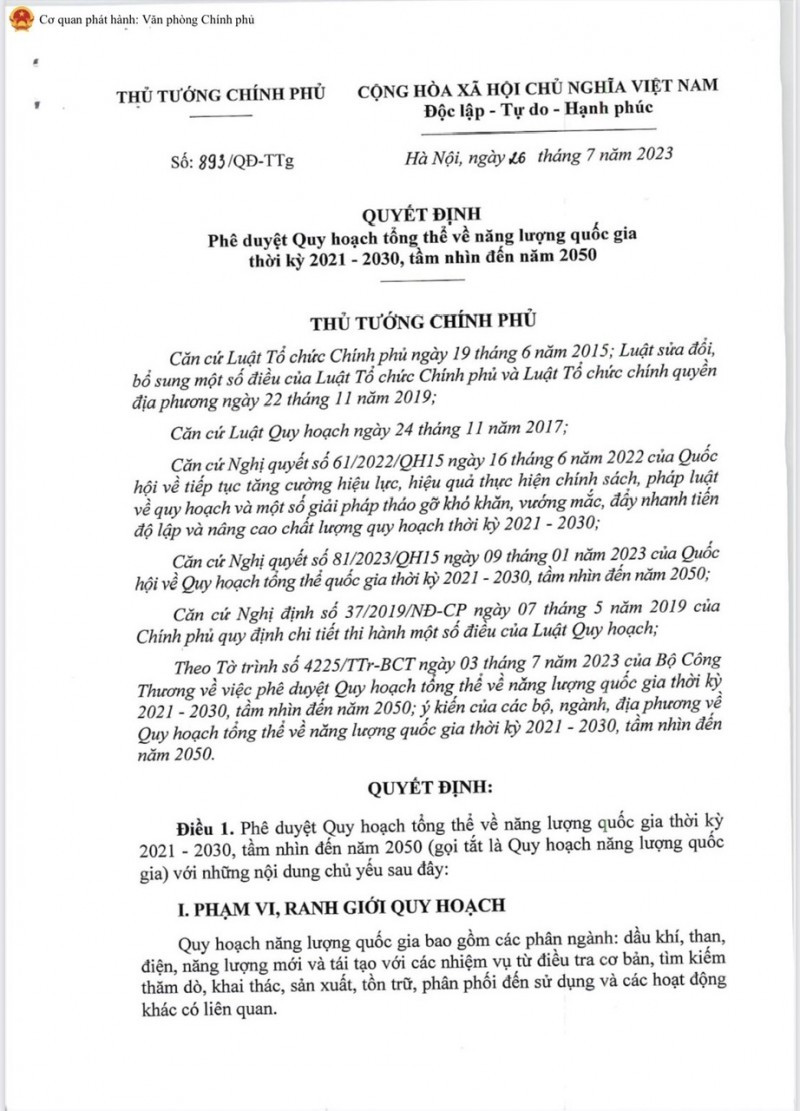 |
| Decision No. 893/QD-TTg of the Prime Minister Approving the National Energy Master Plan for the 2021-2030 period, with a vision to 2050 |
Pursuant to the Law on Organization of the Government dated June 19, 2015; Law amending and supplementing a number of articles of the Law on Organization of the Government and the Law on Organization of Local Government dated November 22, 2019;
Pursuant to the Law on Planning dated November 24, 2017;
Pursuant to Resolution No. 61/2022/QH15 dated June 16, 2022 of the National Assembly on continuing to strengthen the effectiveness and efficiency of implementing policies and laws on planning and a number of solutions to remove difficulties and obstacles, speed up the progress of planning and improve the quality of planning for the 2021 - 2030 period;
Pursuant to Resolution No. 81/2023/QH15 dated January 9, 2023 of the National Assembly on the National Master Plan for the 2021-2030 period, with a vision to 2050;
Pursuant to Decree No. 37/2019/ND-CP dated May 7, 2019 of the Government detailing the implementation of a number of articles of the Law on Planning;
According to Submission No. 4225/TTr-BCT dated July 3, 2023 of the Ministry of Industry and Trade on the approval of the National Energy Master Plan for the 2021 - 2030 period, with a vision to 2050; opinions of ministries, branches and localities on the National Energy Master Plan for the 2021 - 2030 period, with a vision to 2050.
DECISION:
Article 1. Approving the National Energy Master Plan for the 2021-2030 period, with a vision to 2050 (referred to as the National Energy Plan) with the following main contents:
I. PLANNING SCOPE AND BOUNDARIES
The national energy planning includes sub-sectors: oil and gas, coal, electricity, new and renewable energy with tasks ranging from basic investigation, exploration, exploitation, production, storage, distribution to use and other related activities.
II. DEVELOPMENT VIEWPOINTS AND GOALS
1. Development perspective
a) Energy plays an important and essential role in socio-economic development. Energy development must be one step ahead to firmly ensure national energy security and promote rapid and sustainable national development, build an independent and self-reliant economy, improve people's lives and ensure national defense and security. National energy planning must have a long-term, effective and sustainable vision and put national and ethnic interests first and foremost.
b) National energy planning must ensure continuity, objectivity, science and overall optimization of factors of exploitation, production, distribution and use of energy economically and effectively, in accordance with the space and comparative advantages of regions and localities.
c) National energy planning must be dynamic and open, adapting to the context and situation of energy transition in the world. Exploit and effectively use domestic energy resources, combined with reasonable import and export. Energy development must go hand in hand with protection of resources, environment and ecology. Consider the development of renewable energy and new energy as an opportunity to develop the overall energy industrial ecosystem.
d) The State focuses on investing in and encouraging economic sectors to develop sustainable energy on the principle of fair competition and implementing market mechanisms for energy types, ensuring harmony of interests of entities participating in investment and energy use and meeting development requirements of regions and localities.
d) Energy development closely follows the development trend of science and technology in the world, especially renewable energy, new energy, non-energy products, associated with the transformation of the country's economic model towards green growth, green economy, circular economy, low-carbon economy. Synchronously, reasonably and diversely develop energy types according to the roadmap and commitments of Vietnam in sustainable, fair and just energy transition.
2. Development goals
a) General objectives
- Firmly ensure national energy security, meet the requirements of socio-economic development and industrialization, modernization of the country, ensure national defense and security, improve people's lives, and protect the ecological environment.
- Successfully implementing energy transition contributes significantly to meeting the target of net zero emissions by 2050. The energy sector develops harmoniously between sub-sectors with synchronous and smart infrastructure, reaching the advanced level of the region, in line with the world's scientific and technological development trend.
- Develop an independent and self-reliant energy industry; form a comprehensive energy industry ecosystem based on renewable energy and new energy, aiming to become a clean energy industry center and a renewable energy exporter in the region.
b) Specific goals
- On ensuring national energy security
+ Provide enough domestic energy demand, meet socio-economic development goals with an average GDP growth rate of about 7%/year in the period 2021 - 2030, about 6.5 - 7.5%/year in the period 2031 - 2050:
. Total final energy demand is 107 million tonnes of oil equivalent in 2030 and reaches 165 - 184 million tonnes of oil equivalent in 2050.
. Total primary energy supply is 155 million tons of oil equivalent in 2030 and 294 - 311 million tons of oil equivalent in 2050.
+ Increase the total national petroleum reserves (including crude oil and products) to 75 - 80 days of net imports by 2030. After 2030, consider gradually increasing the reserves to 90 days of net imports.
- On a just energy transition
+ The proportion of renewable energy in total primary energy is 15 - 20% in 2030 and about 80 - 85% in 2050.
+ Energy savings of about 8 - 10% by 2030 and about 15 - 20% by 2050 compared to the normal development scenario.
+ Greenhouse gas emissions are about 399 - 449 million tons in 2030 and about 101 million tons in 2050. The target is to reduce greenhouse gas emissions by 17 - 26% in 2030 and about 90% in 2050 compared to the business-as-usual scenario. Aiming to reach peak emissions by 2030, provided that commitments under JETP are fully and substantially implemented by international partners.
- On the development of the energy industry
+ Exploit and use domestic energy resources effectively.
Crude oil production in the 2021 - 2030 period will reach 6.0 - 9.5 million tons/year. Orientation for the 2031 - 2050 period is to reach 7.0 - 9.0 million tons/year.
Natural gas exploitation output in the 2021 - 2030 period will reach 5.5 - 15 billion m3/year. Orientation for the 2031 - 2050 period is to reach 10 - 15 billion m3/year.
. Coal mining output in the period 2021 - 2030 is about 41 - 47 million tons of commercial coal/year. Orientation for the period 2031 - 2050, about 39 million tons of commercial coal in 2045, about 33 million tons of commercial coal in 2050. Strive to put into trial operation of mining in the Red River Coal Basin before 2040 and move towards industrial-scale mining before 2050 (if the trial is successful).
+ Focus on developing the energy industry towards becoming a clean energy industry center and exporting renewable energy in the region, forming and developing renewable energy centers in regions and localities with advantages:
. By 2030, strive to form and develop a number of clean energy centers including energy production and use, renewable energy equipment manufacturing industry, oil and gas processing, construction, installation, and related services in the North, South Central, and South when favorable conditions exist.
. Develop new energy production to serve domestic needs and export. Strive to have a green hydrogen production capacity of about 100,000 - 200,000 tons/year by 2030. Orientation to have a green hydrogen production capacity of about 10 - 20 million tons/year by 2050.
III. ORIENTATION AND GOALS OF ENERGY SUB-SEGMENT PLANNING
1. Oil and gas sector
a) Field of oil and gas exploration and exploitation
- Oil and gas exploration
+ Orientation:
. Promote basic investigation and exploration of domestic oil and gas to increase oil and gas reserves; have specific policies to encourage large oil and gas companies from countries with a position in the world to participate in deep water, offshore, sensitive areas, associated with protecting national sea and island sovereignty.
Actively explore in traditional shallow water areas, research and explore new exploration targets, new sedimentary basins and unconventional hydrocarbon forms (tight reservoirs, coal gas, shallow gas, shale gas, gas hydrate, etc.) to supplement reserves for long-term exploitation.
. For shale oil and gas, gas hydrate (combustible ice), actively research and evaluate geology more deeply and apply scientific and technical advances to expand the scope of surveys; promptly carry out comprehensive assessments and accelerate experimental exploitation when conditions permit.
. Focus on promoting the search and exploration of the Cuu Long, Nam Con Son, Malay - Tho Chu, and Song Hong basins; in parallel with the exploration and expansion of traditional objects to supplement reserves and put into exploitation using the available infrastructure system; gradually shift the direction of exploration and assessment of the possibility of exploiting oil and gas from non-traditional objects. Continue to expand exploration in deep water and offshore areas such as the Phu Khanh, Tu Chinh - Vung May basins, etc.
. Conduct basic investigations, supplement search documents, explore areas with sparse research levels, transitional shallow water areas, and continue to conduct 2D seismic surveys with a denser network of lines; research and evaluate the prospects of discovered structures, and drill to explore the most promising structures in areas deeper than 200 m and far from shore.
. Conduct reprocessing/additional acquisition of 2D/3D seismic data using new, advanced technology to synchronize high-quality seismic data across the entire basin/region; gradually deploy basic investigation work, research on areas with gas hydrate prospects in the Nam Con Son and Tu Chinh - Vung May areas and research on unconventional oil and gas potential (tight reservoirs, coal gas, shallow gas, shale gas, gas hydrates,...) in the Song Hong, Cuu Long and Nam Con Son basins.
Continue to survey and collect seismic and geophysical data at home and abroad to study geological structure characteristics and evaluate the oil and gas hydrate potential of the Truong Sa - Hoang Sa basin when conditions are favorable.
. Focus exploration activities in 3 areas: Southern Red River Basin, Central Nam Con Son Basin and Cuu Long Basin.
. Increase 2D/3D seismic acquisition and reprocessing, especially in key areas to increase resources.
+ Specific objectives:
. In each 5-10 year cycle, comprehensively assess the potential and reserves of oil and gas on land and on the continental shelf of Vietnam.
. Increase reserves: period 2021 - 2030: 16 - 22 million tons of oil equivalent/year, compensation coefficient 0.9 - 1.1. Orientation period 2031 - 2050: 16 - 27 million tons of oil equivalent/year, compensation coefficient 0.6 - 1.0.
- Oil and gas exploitation
+ Orientation:
. Implement well the mine management work, optimize and maintain the effective exploitation of oil and gas mines that have been put into operation.
. Develop and put mines with discovered oil and gas into reasonable and effective exploitation to use domestic oil and gas resources in the long term, focusing on potential areas such as deep offshore waters, non-traditional oil and gas objects. Develop cooperation plans and joint exploitation mechanisms in overlapping areas.
Continue to promote research and application of solutions to improve oil recovery at mines.
. Promote small/marginal mining by applying new technology, connecting to make maximum use of invested infrastructure and State incentive policies.
. Concentrate resources to speed up the progress of two major gas projects: Block B&48/95 and 52/97 gas project and Blue Whale gas project.
+ Specific objectives:
Domestic crude oil: crude oil production in the 2021 - 2030 period will reach 6.0 - 9.5 million tons/year. Orientation for the 2031 - 2050 period is to reach 7.0 - 9.0 million tons/year.
. Natural gas onshore: gas exploitation output in the 2021-2030 period will reach 5.5 - 15.0 billion m3/year. Orientation for the 2031-2050 period is to reach 10.0 - 15.0 billion m3/year.
b) Gas industry sector
- Orientation:
+ Develop a complete gas industry, synchronizing all stages: exploitation - collection - transportation - processing - storage - gas distribution and import and export of gas products.
+ Develop the gas consumption market according to the market mechanism regulated by the State and gradually integrate with the regional and world gas market.
+ Safely and effectively operate existing gas collection, transportation, treatment and processing pipeline systems. Continue to optimally exploit and collect maximum gas volume from large-reserve gas fields, while increasing the collection of small-reserve gas fields and marginal fields to ensure maximum collection of gas sources through existing pipelines in the Red River, Mekong, Nam Con Son and Malaya - Tho Chu basins.
+ Promote the implementation of mine development projects, exploitation, gas collection by pipeline systems, by gas compressor ships (Floating CNG) at mines without collection systems, expand the scope of gas collection (CNG, LNG,...) from mines that cannot collect gas by pipeline (small mines, marginal value, gas with high CO₂ content,... especially associated gas mines).
+ Investing in the construction of gas treatment plants and gas pipelines to the gas treatment plant to supply gas to thermal power plants, gas processing plants and industrial consumers.
+ Increase investment in infrastructure, promote and encourage contractors to invest in building offshore gas collection systems to connect with existing pipeline systems. Implement the construction of gas import pipelines from mines of neighboring countries into the existing pipeline system and the pipeline that will be newly built in the future. Cooperate with domestic and foreign partners to invest in research and apply appropriate technological solutions to recover gas being burned at exploitation platforms, separate high-value products such as ethane, propane/butane (LPG), condensate at gas processing plants to increase the value of oil and gas resources. Build infrastructure to collect and transport gas from exploiting mines.
+ Deploy the construction of LNG port warehouses and import natural gas (LNG, CNG) to serve the needs of electricity production, industry and civil use. Search for imported gas sources from Malaysia, Indonesia, Brunei, etc. through the use of existing infrastructure, at the same time, promote international relations to obtain gas import sources (LNG, CNG) from countries with supply and favorable conditions in trade and transportation, ready to import LNG from 2023.
+ Complete the synchronous system of supplying natural gas, LNG, CNG, LPG, DME nationwide to meet the fuel demand for energy, fertilizer, industry, transportation and civil life. Continue to develop the low-pressure natural gas pipeline transportation system for the needs of industrial consumers along the gas pipeline and residential areas in major cities.
+ Focus resources to accelerate the implementation of gas industry projects, including: Thi Vai LNG import port warehouse project (phase 1 capacity of 1 million tons/year, expected to be completed in 2023; phase 2 increases capacity to 3 million tons/year, expected to be completed after 2025); Son My LNG import port warehouse project (capacity of 3.6 million tons/year, expected to complete phase 1 in 2026-2027); Block B gas project (capacity of 6.4 billion m3/year, expected to be completed in 2027); Blue Whale gas project chain (capacity of 7-9 billion m3/year, expected to be completed before 2030).
- Specific objectives:
+ Collect maximum associated gas from blocks/mines exploited by PVN and oil and gas contractors in Vietnam.
+ Building infrastructure to ensure sufficient capacity to supply 100% of raw gas demand for electricity and other consumers, of which the capacity to import liquefied natural gas will reach about 15.7 - 18.2 billion m3 by 2030 and is oriented to about 10.6 - 12.2 billion m3 by 2050.
+ Develop the gas market to reach about 30.7 - 33.2 billion m3/year by 2030. Orientation to about 20 - 22 billion m3 by 2050.
c) Oil and gas processing sector
- Orientation:
+ Develop the oil and gas processing sector to meet domestic demand, aiming at export. Attract foreign investment capital and social investment capital to develop the oil and gas processing sector according to the principle of ensuring harmony between national and investor interests.
+ Focus on developing integrated oil refining with petrochemicals and chemicals to increase the added value of petroleum products, create raw materials and fuels to serve the development of domestic industrial production, towards export, and reduce the trade deficit.
+ Research and implement investment in improvement/upgrade to suit changing product market trends as well as increasingly strict environmental standards (such as oil refineries,...). Research and invest in developing new petrochemical/specialized chemical products with high added value.
+ Maintain safe, stable and efficient operation of existing petrochemical refineries and condensate processing plants; diversify the products of the plants.
+ Take advantage of the geographical location and invested infrastructure to develop deep processing factories, factories and service facilities. Research and invest in building transportation - storage - production and trading chains of crude oil/petroleum in the existing oil refinery area. Complete the project to upgrade and expand Dung Quat Oil Refinery, forming a national energy and petrochemical center in Dung Quat Economic Zone.
+ Research and invest in new petrochemical/chemical projects associated with oil and gas processing centers.
+ Research on hydrogen production, renewable energy production: integrated with petrochemical, chemical and fertilizer refineries, used as fuel for fuel cells, oriented to complete the downstream hydrogen value chain.
- Specific objectives:
+ Production of petroleum products meets at least 70% of domestic demand.
+ Operate factories safely and stably at designed capacity, while continuing to improve, optimize, diversify products and reduce costs.
d) Field of transportation, storage and distribution of petroleum products
- Orientation:
+ Reasonable development of the petroleum distribution system to ensure circulation and stabilize the consumption market, meeting all domestic petroleum consumption needs.
+ Strengthen solutions to increase crude oil and gasoline reserves.
+ Encourage the widespread use of biofuels and new fuels to reduce dependence on fossil fuels and protect the environment.
- Specific objectives:
+ By 2030, increase the total national petroleum reserves (including crude oil and products) to 75 - 80 days of net import, of which: Production reserves: 20 - 25 days of production; National reserves: 15 - 20 days of net import; Commercial reserves: 30 - 35 days of net import.
+ After 2030, consider gradually increasing the reserve level to 90 days of net imports.
2. Coal sub-sector
a) Coal exploration work
- Orientation:
+ Focus on exploring and upgrading existing coal resources to ensure reliability for mining design and promote exploration of new mines, ensuring that exploration work is always one step ahead.
+ Innovate and apply advanced exploration technology, especially for areas at great depth and with complex geological conditions; continue to seek research and investment partners to select appropriate exploration technologies and methods to explore the Red River Coal Basin.
- Specific objectives:
+ Phase 2021 - 2030: complete the previous phase exploration projects and implement new exploration projects with a volume of about 1,071÷1,328 thousand meters of drilling in the Northeast Coal Basin, about 102÷131 thousand meters of drilling in inland and local coal mines. Carry out exploration work within the planned boundary of trial exploitation in the Red River Coal Basin.
+ Orientation for the period 2031 - 2050: complete the previous phase exploration projects and implement new exploration projects with a volume of about 773÷943 thousand meters of drilling in the Northeast Coal Basin, about 7÷10 thousand meters of drilling in inland and local coal mines; implement exploration projects in the Red River Coal Basin.
b) Coal mining
- Orientation:
+ Focus on developing and maintaining large-capacity underground mines according to the criteria of "Green mine, Modern mine, High-capacity mine, Safe mine". Develop open-pit mines in the direction of increasing the stripping coefficient, in accordance with technical + economic conditions and related planning; carry out the dumping of soil and rock in the direction of maximizing the use of internal waste dumps.
+ Connect small-production mines with suitable geological, geographical and infrastructure conditions into large-production mines.
+ Develop mining output in a sustainable and effective direction; safely, economically and effectively exploit coal resources, including coal resources in the areas of protection pillars of works and the remaining lost coal resources after the end of underground mining.
+ Invest in a number of research topics/projects/trial exploitation projects in the Red River Coal Basin to select appropriate exploitation technology.
+ Encourage localities with small coal reserves to invest in exploitation to serve local needs; focus on exploiting peat for fuel and fertilizer to serve the needs of the agricultural and forestry sectors.
+ Research on mining and using mine waste rock for site leveling to promote circular economic development, improve and restore the mining environment; research on processing mine waste rock to make construction materials to increase the efficiency of mining and using mine waste rock.
+ Strengthen research and application of advanced technology in coal mining, especially large coal mines, coal mines near residential areas, urban areas, coastal areas, etc.
+ Promote activities to seek foreign investment opportunities in coal exploration and exploitation (the type of coal that Vietnam must import) to ensure efficiency and compliance with legal regulations.
- Specific objectives:
+ Period 2021 - 2030: Strive for the entire industry's raw coal output (excluding peat) to be about 46 - 53 million tons/year, equivalent to about 41 - 47 million tons of commercial coal/year.
+ Orientation for the period 2031 - 2050: the total raw coal output of the industry will gradually decrease from 53 million tons in 2030 (equivalent to about 47 million tons of commercial coal) to about 44 million tons in 2045 (equivalent to about 39 million tons of commercial coal) and about 36 million tons in 2050 (equivalent to about 33 million tons of commercial coal). Strive to put into trial operation of exploitation in the Red River Coal Basin before 2040 and move towards industrial-scale exploitation before 2050 (if the trial is successful).
c) Coal screening and processing
- Orientation:
+ Maintain and renovate existing screening plants and coal processing centers combined with reasonable maintenance of mine screening clusters; continue to invest in building new concentrated screening plants in each area to ensure coal processing requirements and market demand.
+ Processing domestic coal combined with blending imported coal to maximize coal types for electricity production; diversifying products to meet domestic demand in accordance with the market.
+ Promote research and application of science and technology in coal processing (for metallurgy, coal gasification to produce suitable gas products serving the energy and industrial sectors, etc.) to diversify non-energy products processed from coal to meet environmental protection requirements and reduce greenhouse gas emissions.
+ Carry out coal screening and processing at local mines managed in accordance with consumption needs and mine project capacity, meeting environmental protection requirements. Build concentrated peat processing facilities with advanced technology, prioritizing the processing of quality products for use in the agricultural and forestry sectors to meet environmental protection requirements.
- Specific objectives:
+ Phase 2021 - 2030:
. Construct new factories, concentrated coal screening and processing centers to increase the coal screening and processing capacity in the Uong Bi area by about 4.0 - 5.0 million tons/year compared to present; construct a new screening workshop with a capacity of about 1.5 million tons/year in the Uong Bi area.
Expanding the centralized screening capacity in the Hon Gai area to about 5.0 million tons/year.
. Strive for the proportion of coal mined and brought into screening and centralized processing to reach about 60 - 65% of total coal production.
+ Orientation for the period 2031 - 2050:
Continue to maintain factories, screening centers, and centralized coal processing that have been invested in; promote renovation and technological innovation, and increase the recovery rate of high-quality coal to serve exports when the demand for domestically produced coal gradually decreases.
. Strive for the rate of coal mined and brought into screening and centralized processing to reach over 65% of total coal production.
d) Coal market and coal import and export
- Orientation:
Export and import coal in accordance with market demand and in accordance with the Government's direction to ensure maximum satisfaction of domestic coal demand, especially coal for electricity production. Actively and proactively seek stable long-term imported coal sources to serve domestic demand, including consideration of coal reserves.
- Specific objectives:
+ Regarding the coal market: gradually form a coal market with many sellers and many buyers, diversify coal supply sources for consumers; complete the research on international coal price indexes suitable for reference prices of imported coal to Vietnam for pilot application and continue to perfect and deploy coal price indexes in imported coal transactions suitable to specific conditions of Vietnam, operate the coal market according to the roadmap for developing a competitive energy market approved by the Prime Minister.
+ Regarding coal imports:
. Period 2021 - 2030: Vietnam is expected to import coal with increasing volume and reach about 73 million tons by 2030, of which the demand for imported coal of thermal power plants designed/planned to use imported coal is about 44 million tons.
. Orientation for the period 2031 - 2050: the volume of imported coal is expected to continue to increase and peak at about 85 million tons in 2035, then gradually decrease to about 50 million tons in 2045, in which the demand for imported coal of thermal power plants designed/planned to use imported coal in 2035 is about 64 million tons and gradually decreases to about 34 million tons in 2045. By 2050, it is expected that Vietnam will not import coal.
+ Regarding coal export:
. 2021 - 2030 period: export high-quality coal that is not needed domestically or is not fully used according to the annual direction of the Prime Minister, the annual coal export volume is about 2.0 - 3.0 million tons.
Orientation for the period 2031 - 2050: continue to export high-quality coal that is not needed domestically or is not fully used according to the direction of the Prime Minister until 2035; after 2035, strengthen the processing of high-quality coal from domestically produced coal to meet world market demand for export.
d) Master planning work, external transportation
- Orientation:
+ Construct new and complete works on the site (mining and dumping areas; technical infrastructure works, environmental protection...) suitable to the needs of each coal mining, screening and processing project; ensure requirements on landscape, environment, natural disaster prevention, coal production efficiency and flexibly meet the needs of future land fund development.
+ Organize the transportation system (road, railway, conveyor belt) suitable for the coal production capacity of each region with modern, environmentally friendly and economically efficient technology; connect coal mines with large consumers in the region in accordance with the socio-economic development planning, urban development planning and infrastructure of areas with coal mining activities; increase the use of conveyor belts, railways and waterways to transport coal and minimize the use of automobile transportation to minimize negative impacts on the environment.
+ Maintain and upgrade a number of auto routes in accordance with the mine expansion plan and urban development plan in the areas.
+ Invest in maintaining and building new conveyor lines in synchronization with the existing specialized railway transport system to transport raw coal from mines to screening facilities; transport finished coal from screening facilities to centralized coal warehouses, thermal power plants and coal export ports in the region suitable for each coal production stage.
+ Continue to maintain national railway lines to transport coal (from Mao Khe, Trang Bach, Hong Thai mines to supply Pha Lai 1, 2 Thermal Power Plant and partly for domestic use; from Nui Hong mine to the northern mixing station of Khanh Hoa mine) and transport raw materials (Mai Pha + Na Duong railway line).
- Specific objectives:
+ Phase 2021 - 2030:
. Highways: investment in maintenance to serve production about 125 km; renovation and upgrading about 112 km.
Railway: invest in maintaining, renovating and upgrading the existing Vang Danh, Khe Than - Uong Bi - Dien Cong railway system to transport coal, supplies, materials... for the Vang Danh, Nam Mau, Dong Vong mine clusters; maintain the existing railway system in the Cam Pha area to transport coal from the mines to the Cua Ong Coal Preparation Plant.
Conveyor belts: invest in maintaining conveyor belt lines with a total length of about 46 km; build new conveyor belt lines with a total length of about 45 km in the areas of Uong Bi, Dong Trieu, Hon Gai, and Cam Pha.
+ Orientation for the period 2031 - 2050:
. Northeast Coal Basin: investing in maintaining roads, railways, and conveyor belts built in the previous phase.
Red River Coal Basin: build new conveyor belts with a total length of about 4.5 km.
e) Coal import and export port planning
- Orientation:
+ Renovate, expand and build new inland ports in coal production areas to serve coal export, import and blending with advanced, modern and environmentally friendly technology.
+ Research on renovating and expanding existing specialized ports of consumers to be able to directly import and transship coal to ships with suitable tonnage when centralized ports have not yet been formed in the areas.
+ Renovate, expand, and build new ports concentrated in coal production areas and by region (North, South) in accordance with the Master Plan for the development of Vietnam's seaport system approved by the Prime Minister and other related plans with appropriate port types, technical infrastructure, synchronous logistics services, advanced, modern and environmentally friendly technology to serve coal export, import, and blending, taking into account the ability to reserve suitable coal to meet production requirements, especially for electricity production; gradually eliminate small, scattered ports with outdated technology.
- Specific objectives:
+ Domestic coal import and export ports:
. Period 2021 - 2030: continue to invest in maintaining and renovating, upgrading and modernizing existing ports and port clusters (Ben Can, Hong Thai Tay, Dien Cong, Lang Khanh, Km 6, Cam Pha, Khe Day, Mong Duong Chemicals) to meet the import requirements of about 16 - 20 million tons of coal/year and export of about 45 - 50 million tons of coal/year.
Orientation for the period 2031 - 2050:
Northeast Coal Basin: invest in building a new Dong Trieu - Pha Lai port with a capacity of 1.0 - 2.0 million tons/year to serve coal consumption for Dong Trieu, Chi Linh I and Chi Linh II mines.
Red River Coal Basin: invest in new ports specialized for coal export at suitable locations with each port's capacity of about 1.0 - 2.0 million tons/year and accommodating ships with a capacity of up to 2,000 tons.
+ Coal import and transit port:
. Phase 2021 - 2030:
Northern region (North and North Central): invest in building a hub port to serve coal import, transit, and supply in the Northern region, combined with deep-water seaports according to the Vietnam Seaport Development Plan to serve power centers (Cam Pha, Quang Ninh; Nghi Son, Thanh Hoa; Son Duong, Ha Tinh; Quang Trach, Quang Binh). The expected capacity of the hub port is about 20 - 30 million tons/year; potential locations to study and build a hub port to serve coal import, transit, and supply include Hon Net (in Quang Ninh province), Quang Trach (in Quang Binh province),...
Southern region (South Central and Southern regions): invest in building key ports to serve coal import, transit, and supply for the Southern region, combined with deep-water seaports according to the Vietnam Seaport Development Plan to serve power centers (Van Phong, Khanh Hoa; Vinh Tan, Binh Thuan; Duyen Hai, Tra Vinh...). The expected capacity of the key port is about 25 - 35 million tons/year; potential locations to study and build key ports to serve coal import, transit, and supply in the Southern region include Go Gia (Ho Chi Minh City), Duyen Hai (Tra Vinh province), Van Phong (Khanh Hoa province),...
Orientation for the period 2031 - 2050: continue to maintain the key ports serving coal import, transit, and supply invested in the previous phase, combined with deep-water seaports invested in according to the Vietnam Seaport Development Plan.
g) Mine closure work
- Orientation:
Comply with current legal regulations; consider choosing the appropriate time and form of mine closure to ensure thorough exploitation, save resources and maximize the efficiency of invested projects.
- Specific objectives:
Implement mine closure projects synchronously, in accordance with the end of exploitation time of coal mining investment projects in each specific phase as detailed in the Implementation Plan of the Planning for each period.
3. New and renewable energy sub-sector
For the new and renewable energy sub-sector, the types of renewable energy included in the planning include: (i) wind energy; (ii) solar energy; (iii) biomass energy; (iv) solid waste energy; (v) small hydropower; (vi) other renewable energy (tidal, geothermal and biogas); new energy (hydrogen, ammonia and fuels derived from hydrogen). The general objective of the National Energy Planning is to promote the production and use of renewable energy, increase the application of renewable energy technology, and make an important contribution to implementing Vietnam's commitment at the COP26 Conference on net zero emissions by 2050.
Orientation to strongly develop offshore wind power combined with other types of renewable energy (solar power, onshore wind power,...) to produce new energy (hydro, green ammonia,...) to serve domestic needs and export. Renewable energy sources that produce new energy to serve domestic needs and export are prioritized/allowed to develop without limit on the basis of ensuring national defense and security, energy security and bringing high economic efficiency, becoming a new economic sector of the country.
a) Renewable energy for power generation
- Orientation:
Continue to promote the development of renewable energy sources (hydropower, onshore and offshore wind power, solar, biomass, etc.), new energy, clean energy (hydrogen, green ammonia, etc.) suitable to the ability to ensure system safety with reasonable electricity prices, especially self-produced, self-consumed power sources, rooftop solar power.
- Specific objectives:
+ Strongly develop renewable energy sources for electricity production, reaching a rate of about 30.9 - 39.2% by 2030, aiming for a renewable energy rate of 47% if receiving strong international financial, technological and governance support according to JETP. Orientation to 2050, the renewable energy rate will reach 67.5 - 71.5%.
+ On developing industrial ecosystem and renewable energy services:
. It is expected that by 2030, 02 inter-regional renewable energy industrial and service centers will be formed, including electricity production, transmission and consumption; renewable energy equipment manufacturing industry, construction, installation, related services, building a renewable energy industrial ecosystem in areas with great potential such as the North, South Central, and South when there are favorable conditions.
. Develop power sources from renewable energy and produce new energy for export. By 2030, strive to have an electricity export capacity of about 5,000-10,000 MW.
b) Renewable energy for heat production
- Orientation:
+ Promote the development of renewable energy technology using biomass, biogas, and solar energy in heat production in industrial, commercial, and civil areas.
- Specific objectives:
+ Total renewable energy sources for heat production and cogeneration of thermal power by 2030 are about 8.0 - 9.0 million tons of oil equivalent, by 2050 about 17.0 - 19.0 million tons of oil equivalent.
+ Solar energy development: increase the absorption area of solar water heaters in commercial services, civil and industrial production, providing about 3.1 million tons of oil equivalent in 2030 and aiming for about 6 million tons of oil equivalent in 2050.
+ Development of biofuels and biogas:
. Biofuel use is expected to reach about 0.28 million tons of oil equivalent by 2030 and is targeted to reach 13.0 million tons of oil equivalent by 2050.
. Using biogas with an expected construction volume of about 60 million m3 by 2030 and oriented to about 100 million m3 by 2050.
c) Renewable energy for other industries
- Orientation:
Development of renewable energy forms including biofuels, hydrogen, ammonia and synthetic fuels derived from hydrogen for use in electricity generation, transportation (road, rail, waterway, air), industry (steel, chemicals, oil refining, other industries...), civil and commercial buildings to contribute to promoting energy transition and gradually decarbonizing the economy. Building a technology roadmap for the production and use of hydrogen fuel and fuels derived from hydrogen.
- Specific objectives:
+ Increase hydrogen production through electrolysis and other processes with carbon capture to 100 - 200 thousand tons by 2030 and target about 10.0 - 20.0 million tons by 2050.
+ Increase synthetic fuel output to about 2.0 - 3.0 million tons by 2050.
+ Promote the application of carbon capture, utilization and storage solutions in industrial production facilities and power plants with the capacity to capture about 1 million tons by 2040 and orient about 3 - 6 million tons by 2050.
4. Electricity sub-sector
The electricity sub-sector is implemented according to the National Power Development Plan for the 2021-2030 period, with a vision to 2050 (Power Plan VIII) approved by the Prime Minister in Decision No. 500/QD-TTg dated May 15, 2023.
5. Investment capital needs
Total investment capital demand of the energy industry for the entire period 2021 - 2050 is about: 15,304 - 19,398 trillion VND. Investment phases are as follows:
- Period 2021 - 2030: about 4,133 - 4,808 trillion VND.
- Orientation for the period 2031 - 2050: about 11,170 - 14,590 trillion VND, will be determined in the next planning/plans.
IV. ORIENTATION FOR LAND USE ARRANGEMENT FOR DEVELOPING ENERGY PROJECTS AND ENVIRONMENTAL PROTECTION ACTIVITIES, RESPONDING TO CLIMATE CHANGE AND CONSERVING ECOLOGY, LANDSCAPES AND MONUMENTS
1. Land use arrangement for energy development
Land demand for infrastructure development and energy sector is about 93.54 - 97.24 thousand hectares in the period of 2021 - 2030 and is oriented at about 171.41 - 196.76 thousand hectares in the period of 2031 - 2050.
The sea surface area for offshore constructions is estimated at 334,800 - 334,800 hectares by 2030 and at 1,302,000 - 1,701,900 hectares by 2050.
2. Activities to protect the environment, respond to climate change and preserve ecology, relics and natural landscapes
Implement a strong energy transition from fossil fuels to renewable and new energy to reduce emissions of pollutants and greenhouse gases, meeting the target of net zero emissions by 2050.
Applying new and modern technology towards shifting to a low-carbon economy, circular economy, reducing energy consumption, reducing emissions, aiming to meet regulations on carbon emissions per unit of exported goods and carbon markets.
Avoid and minimize the development of energy projects and energy infrastructure in locations that pose a risk of affecting forests, nature reserves and biodiversity, natural heritage, landscapes, relics and cultural heritages that have been classified in accordance with environmental zoning in the National Environmental Protection Plan.
Implement appropriate solutions during project implementation to ensure increased resilience of energy projects, safe and stable operation, and minimize risks, losses and damages caused by climate change to energy projects and infrastructure.
V. LIST OF IMPORTANT PROJECTS WITH PRIORITY FOR INVESTMENT IN THE ENERGY SECTOR AND ORDER OF IMPLEMENTATION PRIORITY
1. Criteria and arguments for building a list of important projects and prioritizing investment in the energy sector
Important projects and investment priorities in the energy sector are built on the following criteria:
a) National important projects are decided or approved in principle by the National Assembly in accordance with the provisions of Article 7 of the Law on Public Investment and Article 30 of the Law on Investment.
b) The project meets one of the following criteria:
- Plays an important role in balancing national energy supply and demand and important energy regions, areas and centers to ensure national energy security and meet the country's socio-economic development needs.
- Ensure national defense and security, protect national sovereignty and especially difficult areas, mountainous areas and islands.
- Search and explore primary energy sources and develop new energy.
- Investing in primary energy import infrastructure and investing in energy exploitation abroad to contribute to ensuring national energy security.
- Has inter-regional connectivity, links supply chains, production, energy use, forming energy clusters and centers.
- Contribute to climate change adaptation, reduce greenhouse gas emissions, protect the environment (biomass, electricity produced from waste, solid waste, cogeneration, use of excess gas, etc.), and fulfill climate commitments.
- Contribute to creating a comprehensive ecosystem of renewable energy industry and services.
- Exporting electricity, exporting new energy produced from renewable energy.
- Efficient land use.
- Application of modern technology.
- High economic and social efficiency.
Important, priority investment projects are divided into 2 groups:
- Important, priority investment projects: are projects with a clear legal basis for implementation, have been planned in the previous stage or are in the investment preparation process.
- Potential important projects: are projects formed based on the following arguments:
+ Meet the criteria of priority investment projects.
+ Feasibility in implementation: depends on the development situation in the coming period (market demand, connection projects, related infrastructure, etc.).
+ Applying new technology, environmentally friendly.
2. List of major investment projects in the energy sector
List of main investment projects in the energy sector includes:
a) Important projects with investment priority in Appendix IA attached to this Decision.
b) Potential important projects in Appendix IB attached to this Decision.
c) Other projects in Appendix II attached to this Decision.
VI. SOLUTIONS AND RESOURCES TO IMPLEMENT THE PLAN
1. Solutions on capital mobilization and allocation
- Diversify capital sources and forms of capital mobilization, effectively attract domestic and foreign capital sources for energy development, ensure national defense, security and competition in the energy market. Strengthen the appeal and effective use of international support commitments (e.g. JETP, AZEC, ...), green credit sources, climate credit, green bonds, ...
- Diversify investment forms (state, private, public-private partnership, etc.) for energy projects. Promote the role of state-owned enterprises, strongly attract domestic and foreign private sectors to participate in energy development investment. Continue to negotiate, effectively use funding sources, support capital arrangement from international partners in the process of implementing energy transition and moving towards net zero emissions in Vietnam.
- There is a policy of prioritizing investment in developing sustainable energy infrastructure; focusing on building energy import and export infrastructure and regional connectivity.
- Gradually increase the ability to mobilize internal finance in Corporations, General Companies, and energy enterprises through solutions: improve the efficiency and performance of energy enterprises, ensure accumulation, ensure the ratio of equity capital for development investment according to the requirements of domestic and international financial institutions; move towards the main source of capital mobilization for investment projects from the self-accumulated capital of enterprises.
2. Solutions on mechanisms and policies
a) Energy market, energy prices
- Develop a synchronous and interconnected energy market between the electricity, coal, oil and gas and renewable energy sub-sectors, connecting with regional and world markets.
- Perfecting mechanisms, policies and market-based tools to promote the use of energy economically and efficiently.
- Improve the capacity of the state management apparatus for the energy sector to promptly resolve legal problems and barriers.
- Complete the legal framework for the energy sector in accordance with the development stages of the energy market (gas, coal, electricity) and policies to promote renewable energy development; at the same time, ensure consistency, avoid overlaps or conflicts between regulations.
- Restructure the energy sector with a specific roadmap, suitable for the development stages of the energy market, ensuring clear separation between fields and stages with natural monopolies and fields and stages with potential competition in the energy sector to improve transparency, efficiency, and non-discrimination among members participating in the energy market.
- Developing the gas and coal markets is linked to priority policies and stabilizing gas and coal supply for electricity production to ensure national energy security.
- Gradually put energy prices into operation according to the competitive market mechanism, ensuring that they reflect reasonable, valid, transparent and public costs. The State only regulates prices and fees for natural monopolies in the energy sector, or in areas and regions where there is no competition.
b) Use energy economically and efficiently
- Perfecting mechanisms, policies, and market tools to promote the use of energy economically and efficiently. Issuing policies, mechanisms, and legal regulations for the business model of energy-saving service companies (ESCOs).
- Review, amend and supplement national standards and regulations in the energy sector in accordance with international regulations and standards, taking into account national standards and regulations related to the recycling and use of waste from the energy production process. Gradually apply measures to encourage and require innovation of technology and equipment in the energy sector as well as in sectors and fields that use a lot of energy.
- Restructure energy-consuming industries, especially foreign-invested sectors, to reduce energy intensity. Have policies to encourage the development of industries that consume less energy and are economically and socially efficient.
- Review and adjust the distribution of flexible energy consumption sources in a decentralized direction, limit excessive concentration in some localities, closely combine with the redistribution of industrial and urban development space nationwide, in each region and locality.
- Review and complete the National Program on economical and efficient use of energy for the period 2020 - 2030. Implement mandatory standards and regulations with sanctions on efficient use of energy for fields, industries and products with high energy consumption. Have policies to encourage households to use clean and renewable energy, especially in industry and transportation; promote the development of electric vehicles in line with the general trend in the world.
3. Solutions on environment, science and technology
a) Environmental protection and climate change response
- Research and develop appropriate carbon tax policies for the use of fossil fuels. Develop mechanisms and policies to implement the recovery and use of CO2. Evaluate the effectiveness of the use and recycling of ash and slag generated based on the balance of demand and consumption capacity for construction materials.
- Complete the policy framework, develop and supplement the system of national standards and regulations on emissions and waste in the energy sector towards approaching the standards of developed countries.
- Develop and implement a project to integrate the circular economic model into the development strategy of energy enterprises. Develop a waste management and treatment system in energy production with advanced technology, suitable for the conditions of our country; ensure the capacity to self-treat waste sources in energy enterprises. Have mechanisms and policies to encourage the development of environmental industries associated with the energy sector.
- Strictly comply with Vietnamese laws on safety and environmental protection, fully implement commitments in environmental impact assessment reports of all projects; continuously improve working conditions and environment and ensure health for workers.
- Strengthen and consolidate environmental management organizations of state management agencies and enterprises operating in the energy sector.
- Fully implement the work of monitoring, observing, measuring and managing environmental indicators; regularly inspect the implementation of environmental protection regulations of energy enterprises.
b) Science and technology
- Forming a mechanism to link the scientific and technological research and development force, innovation with businesses and training institutions in the energy sector through science and technology programs; integrating research and development activities into strategies, planning and energy development plans.
- Create mechanisms to encourage energy businesses to increase investment in research and development; establish innovation centers in the energy sector.
- Continue to implement the national key science and technology program on research, application and development of energy technology for the period 2021 - 2030, focusing on research and manufacturing of energy equipment and application of new forms of energy, renewable energy, smart energy, and energy saving.
- Strengthen research, application and technology transfer; build a team of leading, highly qualified scientific and technological staff; strengthen measures to more closely link scientific research with training and application.
- Promote scientific research and international cooperation in the field of environmental protection and climate change response to gradually apply new technologies to improve efficiency and save costs of environmental protection.
- Promote research on new forms of energy, such as nuclear energy, ocean waves, geothermal energy, green hydrogen, green ammonia, etc.; develop strategies on other new forms of energy.
4. Solutions for human resource development
- Develop a comprehensive human resource development policy and training programs for key stages of the energy sector. Strengthen training of technical workers and professional staff to meet domestic demand, aiming for export. Effectively use human resources trained in nuclear energy along with advanced training.
- Develop development plans and human resource training plans for key technology fields, creating breakthroughs in the energy industry.
- Build appropriate remuneration mechanisms to attract high-quality human resources in the energy sector.
- Issue appropriate incentive policies to attract domestic and foreign experts, scientists, and highly qualified human resources to work in the energy sector; form strong scientific and technological groups capable of solving important tasks in the energy sector.
- Strengthen cooperation and linkage with prestigious domestic and international training institutions to develop human resources.
- Through investment projects to train and receive new, modern technologies.
- Focus on vocational training to have a team of skilled technical workers and professional staff capable of grasping and proficiently using modern technical means and technology.
5. Solutions on international cooperation
- Implement a flexible, effective, equal and mutually beneficial energy foreign policy. Strengthen international energy relations in all sub-sectors and fields in line with the integration trend, take advantage of opportunities from trade agreements and favorable political and diplomatic relations to develop energy.
- Promote international cooperation; actively and proactively build strategic partnerships to realize long-term energy import goals and invest in energy resources abroad.
- Actively participate in energy cooperation in the Greater Mekong Sub-region (GMS) and Southeast Asia (ASEAN); connect the power grid, complete the electricity trading mechanism with China, Laos and Cambodia. Continue to study the connection of the gas system in the region, and implement it when conditions permit.
- Actively and effectively implement the contents of JETP, make the most of the support of international partners in technology transfer, administration, human resource training, and financial provision, considering JETP as an important solution for the energy transition process in Vietnam.
- Promote international cooperation and integration, encourage and attract partners from all economic sectors in the country and foreign investors to participate in the energy sector.
- Expand international cooperation in scientific research and technology development, diversify cooperation methods to take advantage of technology transfer and funding from foreign partners and build a domestic supply chain for energy equipment.
6. Solutions on organization, implementation and supervision of planning implementation
- Develop a plan to implement the plan immediately after the National Energy Plan is approved and update the plan according to the actual situation every year to report to the Prime Minister for consideration and approval.
- Organize inspection and supervision of the implementation of the National Energy Plan according to the provisions of law.
- The order of investment implementation of development projects/schemes must comply with relevant legal provisions (laws on investment, construction, oil and gas, minerals, environmental protection, etc.), and can be carried out before and/or during the planning phase to ensure that projects/schemes are put into production/operation on schedule specified in the Planning.
- Build an energy database, including data on planning and planning implementation to serve as a basis for monitoring the implementation of the planning. Regularly review the development of energy supply and demand nationwide and in localities, and the progress of energy projects to propose solutions to adjust energy supply and progress if necessary, ensuring energy supply and demand of the economy.
- Establish a National Steering Committee on Energy Development to monitor and urge the implementation of the National Energy Plan, promptly remove arising difficulties and problems.
- Develop and apply institutions on discipline and compliance in the implementation of the National Energy Plan for investors, ministries, branches, State Capital Management Committees at enterprises and localities. Develop sanctions to handle and recover projects that are slow and not implemented according to the assigned schedule.
Article 2. Implementation
1. Ministry of Industry and Trade
- Responsible for the accuracy of data, documents, diagrams, maps and databases in the Planning Documents, ensuring consistency with the content of this Decision.
- Organize the announcement of the planning according to regulations and implement this Decision in conjunction with the implementation of socio-economic development tasks according to the provisions of law; develop a Planning Implementation Plan based on the criteria and arguments specified in this Decision to implement the objectives and tasks set out in the planning; organize the assessment of planning implementation according to the provisions of the Planning Law. Complete and submit to the Prime Minister the Planning Implementation Plan in 2023.
- Promote research on new forms of energy, such as nuclear energy, ocean waves, geothermal energy, green hydrogen, green ammonia, etc.; develop strategies on new forms of energy.
- Promote the development and improvement of necessary conditions for the development of an effective competitive energy market.
- Preside over research and propose amendments to legal documents, authorization and decentralization mechanisms to be submitted to the Prime Minister for decision to create conditions to ensure progress for energy projects.
2. Ministries, branches, State Capital Management Committee at Enterprises
Fully perform functions, tasks and powers to properly deploy projects in the National Energy Plan; propose mechanisms, policies and solutions to remove obstacles to effectively implement the planning's objectives, ensuring consistency and synchronization with the implementation of the 10-year Socio-Economic Development Strategy 2021 - 2030, and socio-economic development plans of each sector and locality.
3. People's Committees of provinces and centrally run cities
Organize the selection of investors for energy projects, arrange land funds for the development of energy projects according to the provisions of law, in which priority is given to land funds for the implementation of energy projects according to the Planning; preside over and closely coordinate with investors to carry out site clearance, compensation, migration and resettlement for energy projects according to regulations.
4. Vietnam Electricity Group
- Play a key role in ensuring stable and safe power supply for socio-economic development. Invest in power source and grid projects in accordance with assigned tasks.
- Regularly review and evaluate the balance of electricity supply and demand, the operating status of the national and regional power system, and report to competent authorities.
- Thoroughly implement solutions to innovate business management, improve production and business efficiency, increase labor productivity, reduce electricity loss, save costs, and reduce prices.
5. Vietnam Oil and Gas Group
- Proactively develop and adjust the Group's development strategies and plans in accordance with the approved National Energy Plan; increase capital mobilization from domestic and foreign organizations to implement investment projects, especially key oil and gas projects.
- Coordinate with the contractor consortium to have plans to optimally exploit oil and gas resources from Block B, Blue Whale fields,... as well as planned infrastructure projects in the oil and gas sector, including the LNG import port warehouse project.
- Strengthen the search, exploration and exploitation of domestic oil and gas resources to supply industries.
- Promote investment in energy projects according to assigned tasks.
6. Vietnam National Coal - Mineral Industries Group, Dong Bac Corporation
- Proactively develop and adjust the Group's and Corporation's development strategies and plans in accordance with this Plan.
- Continue to take primary responsibility for implementing the coal sub-sector planning content and sustainable development of the coal sub-sector; perform well the role as the key focal point in providing domestically produced coal to users; proactively select and determine the time to implement appropriate preparation and investment work according to regulations to ensure that exploration projects, coal mine projects, and infrastructure projects assigned to manage are put into production/operation on schedule according to the Planning.
- Exploit, process and supply coal according to the approved development orientation of the coal sub-sector; ensure sufficient supply of coal for consumers according to signed coal purchase/supply contracts, especially ensure sufficient supply of coal for electricity production according to long-term, medium-term and short-term coal purchase/supply contracts signed with investors of coal-fired thermal power plants.
- Closely follow the developments of the domestic and world coal markets; actively and proactively seek reputable coal suppliers in the world with stable long-term coal sources to diversify imported coal sources.
- Coordinate with domestic and foreign investors with sufficient capacity to research and invest in the construction of coal transit ports.
- Actively and proactively seek and coordinate with domestic and foreign organizations and individuals with sufficient capacity and appropriate technology to research and invest in selecting technology and appropriate exploration methods to implement pilot exploitation topics/projects/projects, moving towards an effective industrial exploitation plan for the Red River Coal Basin. Coordinate with domestic and foreign enterprises and organizations to research the use of coal for non-energy needs, coal gasification, etc.
- Research and apply science and technology in processing coal into clean energy and other products (for metallurgy, coal gasification to produce suitable gas products for the energy and industrial sectors, etc.) to diversify coal-processed products.
- Promote investment in energy projects according to assigned tasks.
7. Vietnam National Petroleum Group and other energy sector enterprises
- Proactively develop and adjust strategies, plans and development plans in line with the overall development of the entire energy sector; have plans to increase capital mobilization from domestic and foreign financial institutions.
- According to the authority and functions prescribed in the enterprise charter and legal regulations, the organization shall specifically implement the tasks and solutions in this Plan.
Article 3. This Decision comes into force from the date of signing and promulgation.
Article 4. Ministers, Heads of ministerial-level agencies, Heads of Government agencies, Chairmen of People's Committees of provinces and centrally run cities; Chairmen of the Board of Members, General Directors of the Corporations: Vietnam Electricity, Vietnam Oil and Gas, Vietnam Petroleum, Vietnam Coal - Minerals, Dong Bac Corporation and relevant agencies are responsible for implementing this Decision.
| Recipient: - Central Party Secretariat; - Prime Minister, Deputy Prime Ministers; - Ministries, ministerial-level agencies, and government agencies; - People's Councils and People's Committees of provinces and centrally run cities; - Central Office and Party Committees; - Office of the General Secretary; - Office of the President; - Council of Nationalities and Committees of the National Assembly; - Office of the National Assembly; - Supreme People's Court; - Supreme People's Procuracy; - State audit; - National Financial Supervision Commission; - Social Policy Bank; - Vietnam Development Bank; - Central Committee of the Vietnam Fatherland Front; - Central agencies of organizations; - Corporations: Vietnam Electricity, Vietnam Oil and Gas, Vietnam Petroleum, Vietnam Coal and Mineral Industry; - Northeast Corporation; - Government Office: BTCN, PCNs, Assistant to the Prime Minister, Director of the Electronic Information Portal, Departments, Bureaus, Official Gazette; - Save: VT, CN (2). | Prime Minister DEPUTY PRIME MINISTER [signed] Tran Hong Ha |
Nguyen Duyen
Source


![[Photo] Deep sea sand deposits, ancient wooden ship An Bang faces the risk of being buried again](https://vphoto.vietnam.vn/thumb/1200x675/vietnam/resource/IMAGE/2025/11/13/1763033175715_ndo_br_thuyen-1-jpg.webp)




![[Photo] Special class in Tra Linh](https://vphoto.vietnam.vn/thumb/1200x675/vietnam/resource/IMAGE/2025/11/14/1763078485441_ndo_br_lop-hoc-7-jpg.webp)
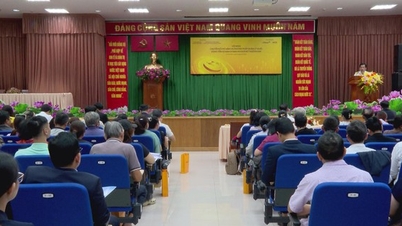

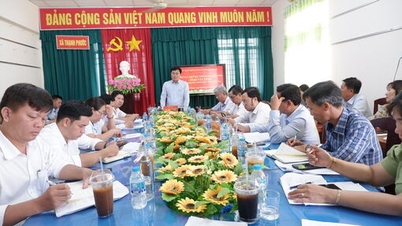

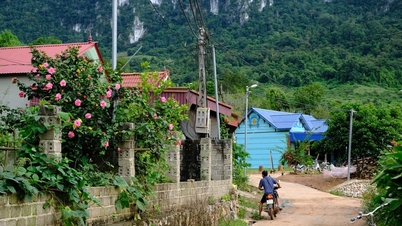







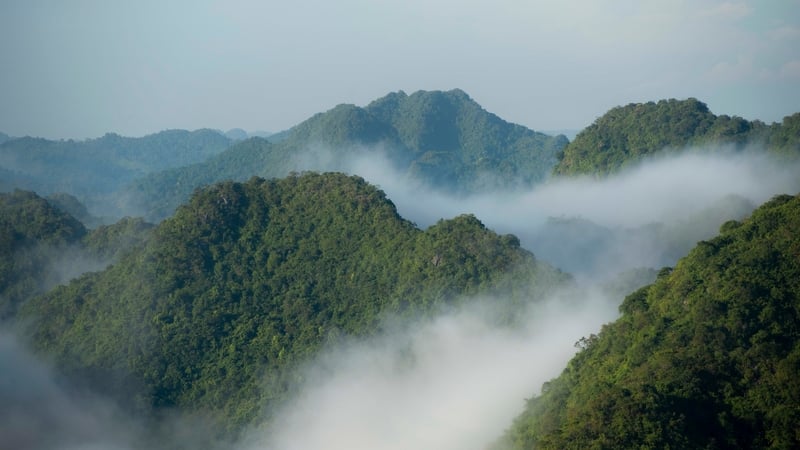



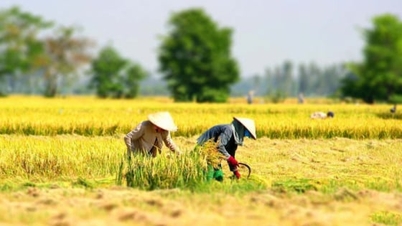





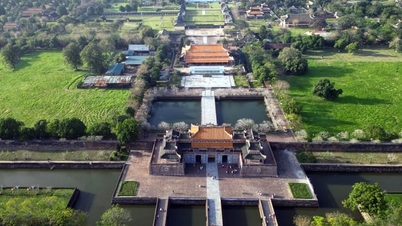



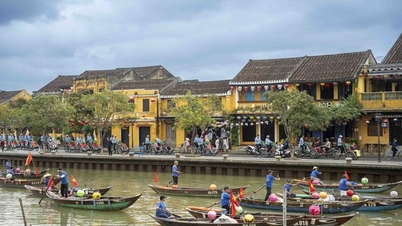






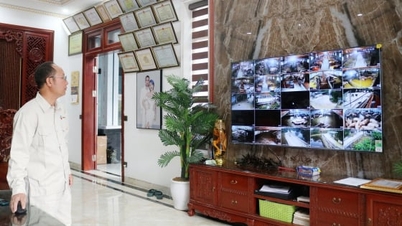


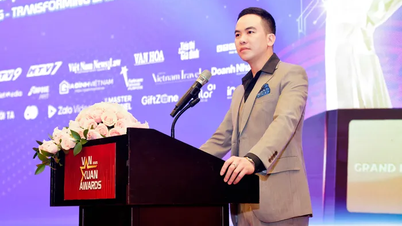



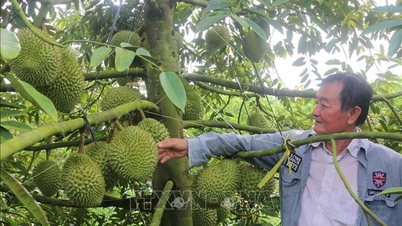
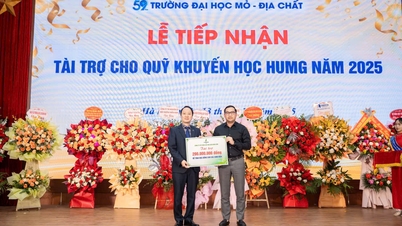



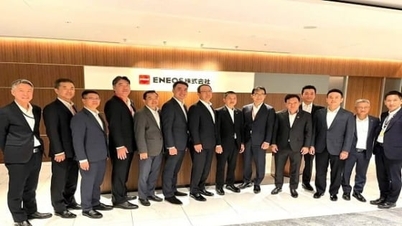










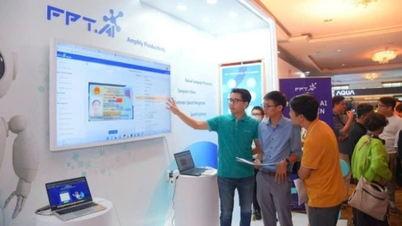

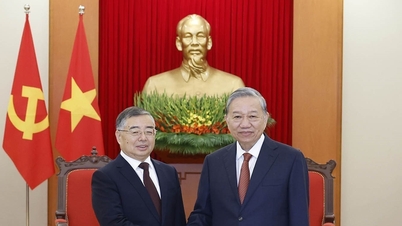
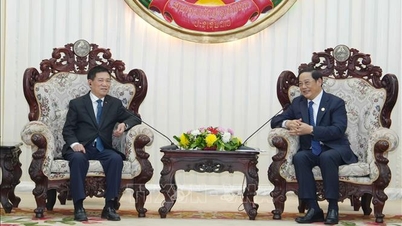


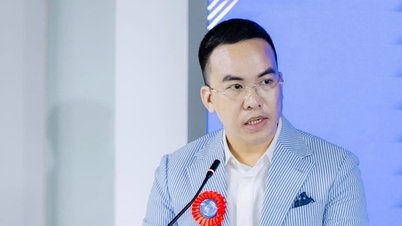
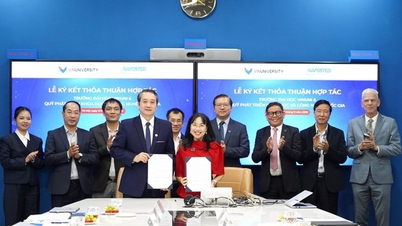

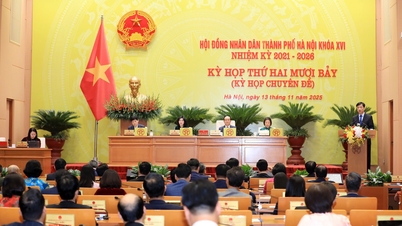

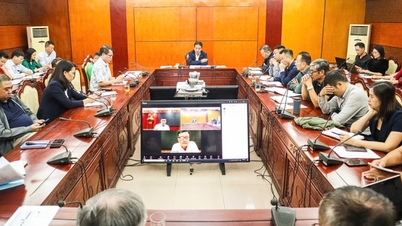

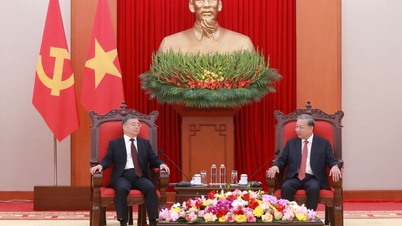
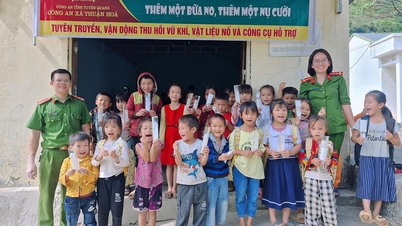



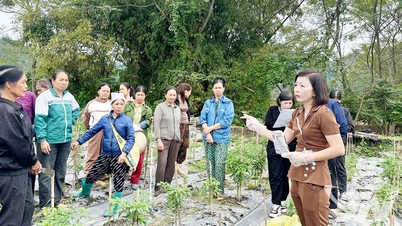

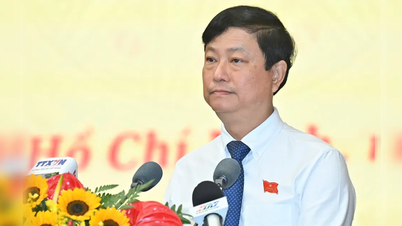

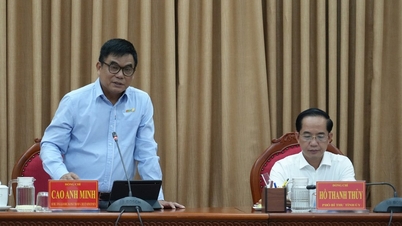
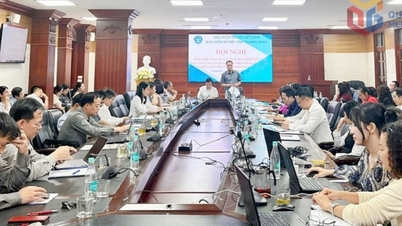

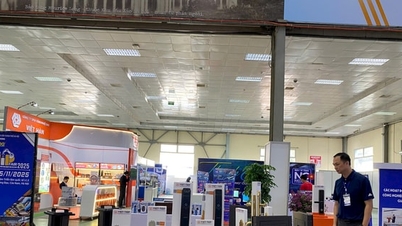


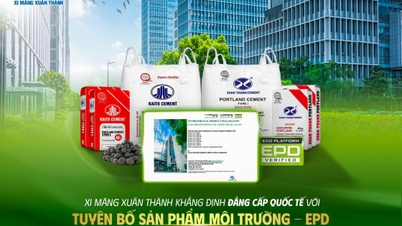
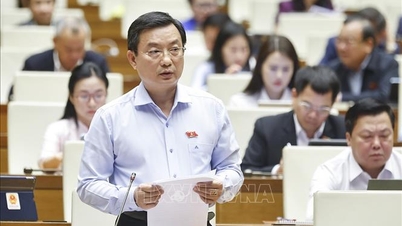
![Dong Nai OCOP transition: [Article 3] Linking tourism with OCOP product consumption](https://vphoto.vietnam.vn/thumb/402x226/vietnam/resource/IMAGE/2025/11/10/1762739199309_1324-2740-7_n-162543_981.jpeg)




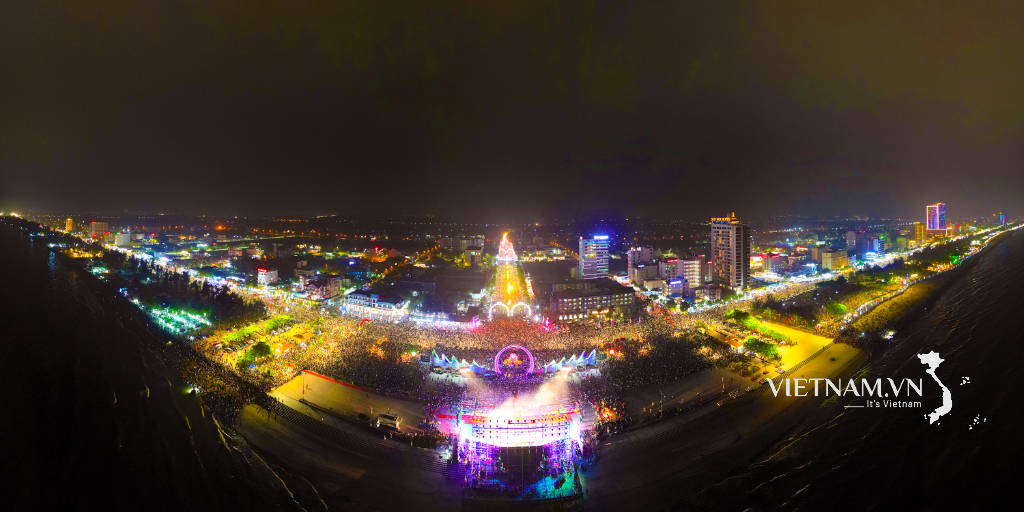

Comment (0)